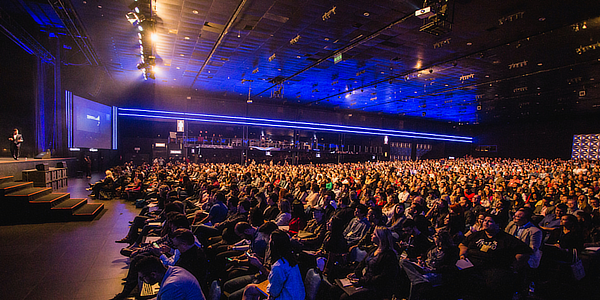3 min read
Does Social Connection Increase Happiness?
As we navigate the complexities of modern life, the 2024 World Happiness Report sheds light on the underpinnings of...

My knees were shaking as I walked onto the stage at the Edinburgh International Conference Center. I had been invited to give a talk at TED Global, the biggest of the big leagues of public speaking, and I was beyond nervous. So nervous, that a TED production assistant agreed to click through my slides because I couldn't do it myself in rehearsal. Speaking at TED was a life-changing experience—my talk has been viewed over 1.6 million times. But not every TED talk goes viral. TED curator Chris Anderson warned the speakers that only 80% of what appears live at TED makes it online; the other 20% are just not good enough. So, what makes a TED talk great?
Immersion's scientists picked seven TED talks that according to various lists are the best and worst. The most watched TED Talk by Brené Brown has over 38 million views, while the talk with the fewest views, under 5,000, was by Jason Seiken.
Immersion correctly predicted the number views of the talks in our sample (correlation 0.37). Importantly, the number of views was highly responsive to immersion. A 10% increase in immersion would result in 16% more online views of a talk. The median TED talk has around a million views, so a speaker who increased immersion by 10% would get in 176,000 more views—a quite substantial effect.
In order to understand what makes TED talks great, we examined the longest and deepest moments of peak immersion. Across the seven talks, we found 18 peak immersion periods of 24 seconds or longer. These varied from one peak moment for Brené Brown and Jason Seiken to five for Tony Robbins. Speakers created deeply immersive moments when they shared personal stories, when something completely unexpected happened, and during calls to action to the audience.
All of us, from students to CEOs, need to speak in public, so why not make the biggest impact? To ensure you WOW your audience, rehearse while you measure immersion. Use these data to create peak immersion moments to drive up immersion and drive up the impact on your audience. At the end of my TED talk, I hugged a random audience member and the crowd started hugging each other creating pandemonium and a standing ovation. I found this peak immersion moment through luck, but now you can use science and will ensure your talk goes viral.
Apr 9, 2024 Written by Paul J. Zak
As we navigate the complexities of modern life, the 2024 World Happiness Report sheds light on the underpinnings of...
Apr 2, 2024 Written by Paul J. Zak
Why do people flock to live theater events in an age where digital entertainment is just a click away? This blog delves...
Mar 21, 2024 Written by Paul J. Zak
In this blog we explore the idea of 'confelicity' - the joy in sharing others' happiness - which is crucial for love...